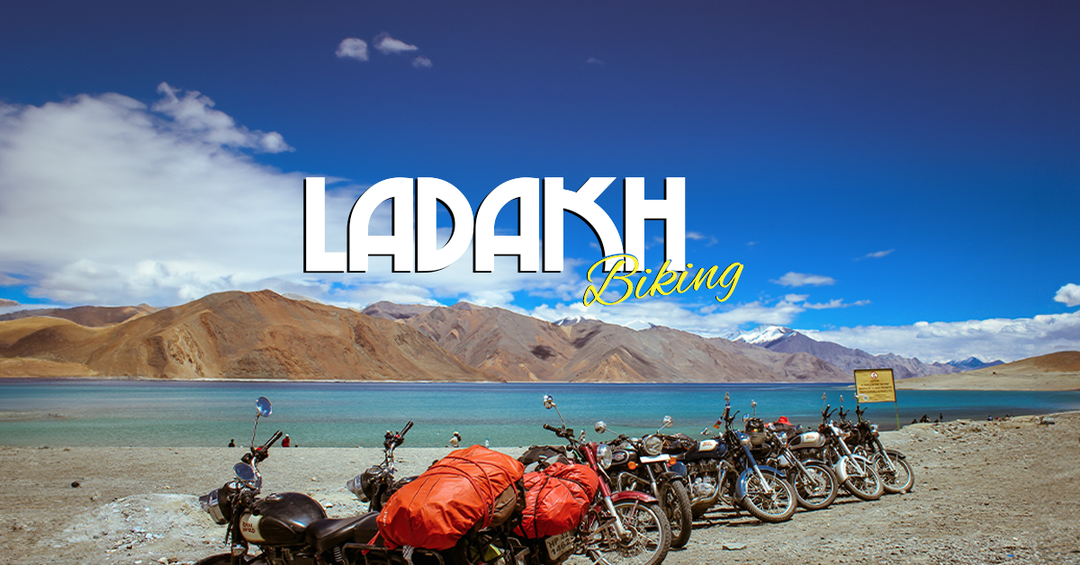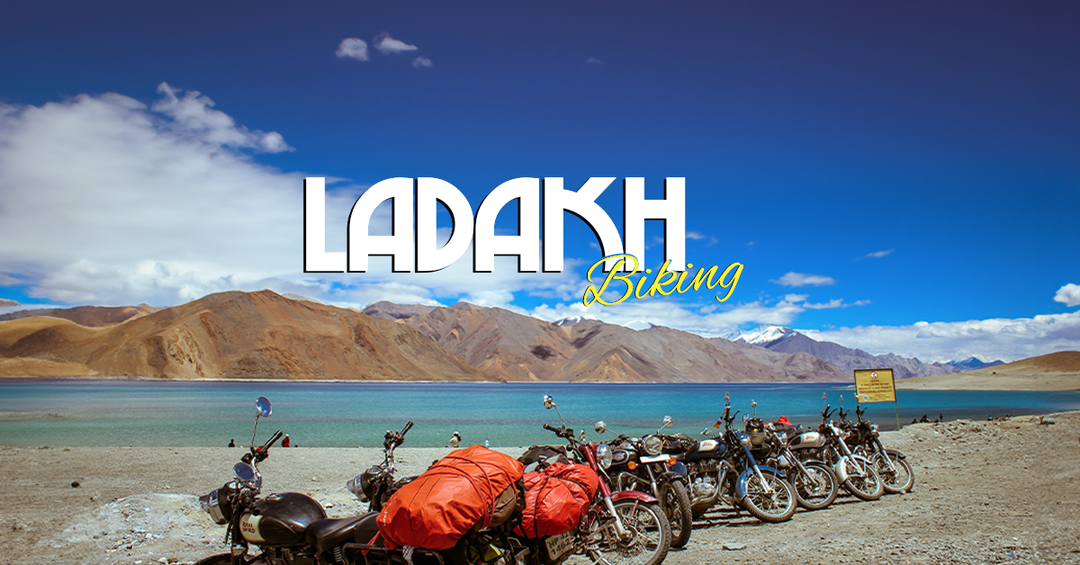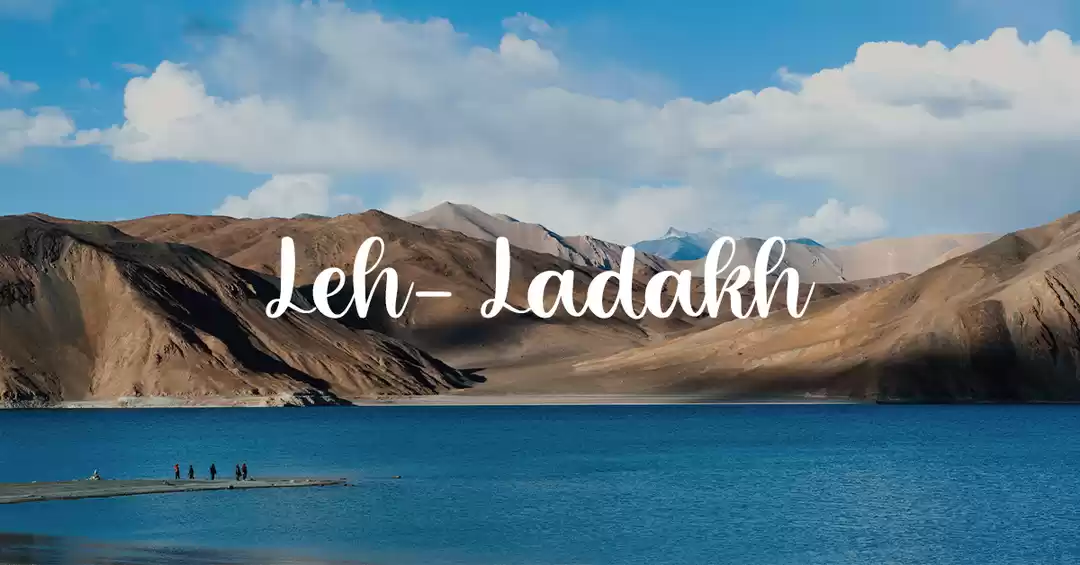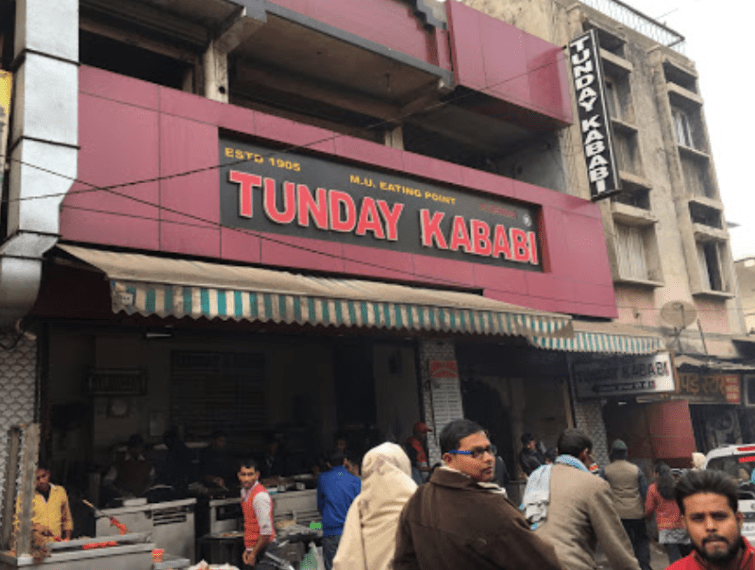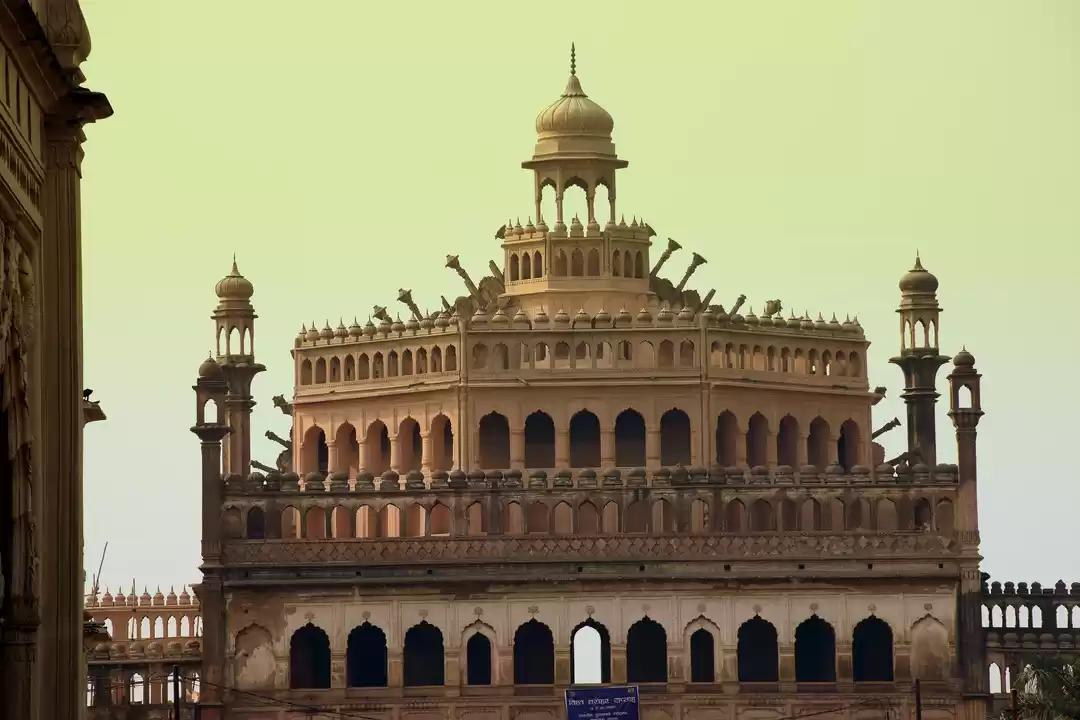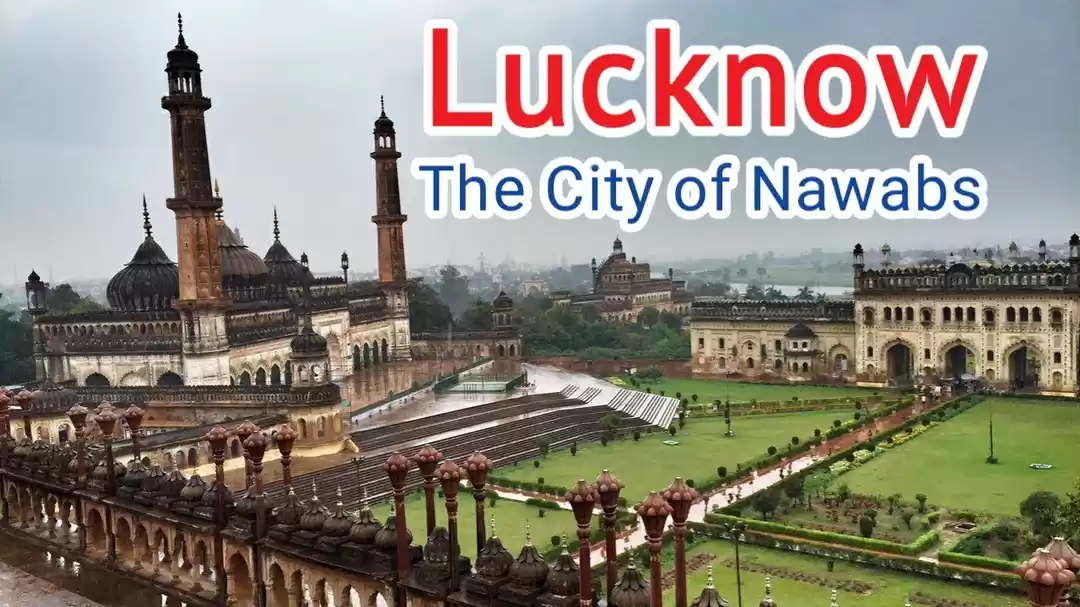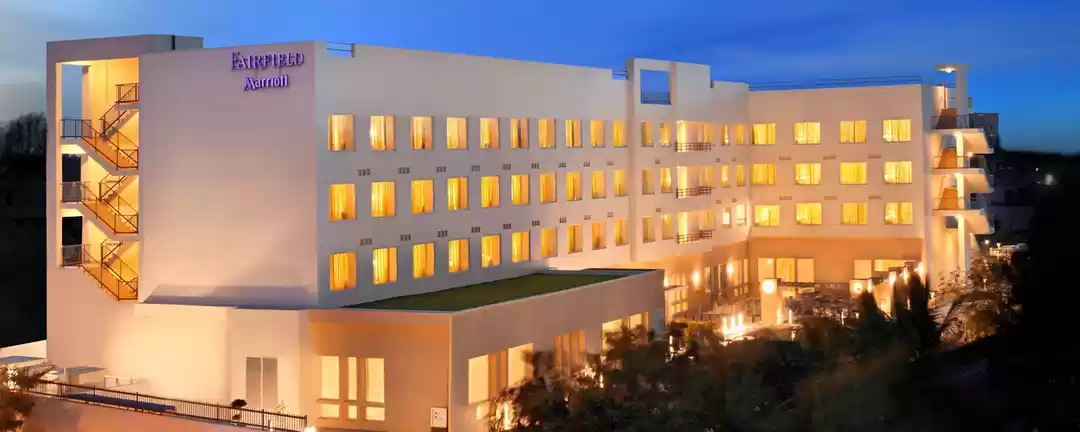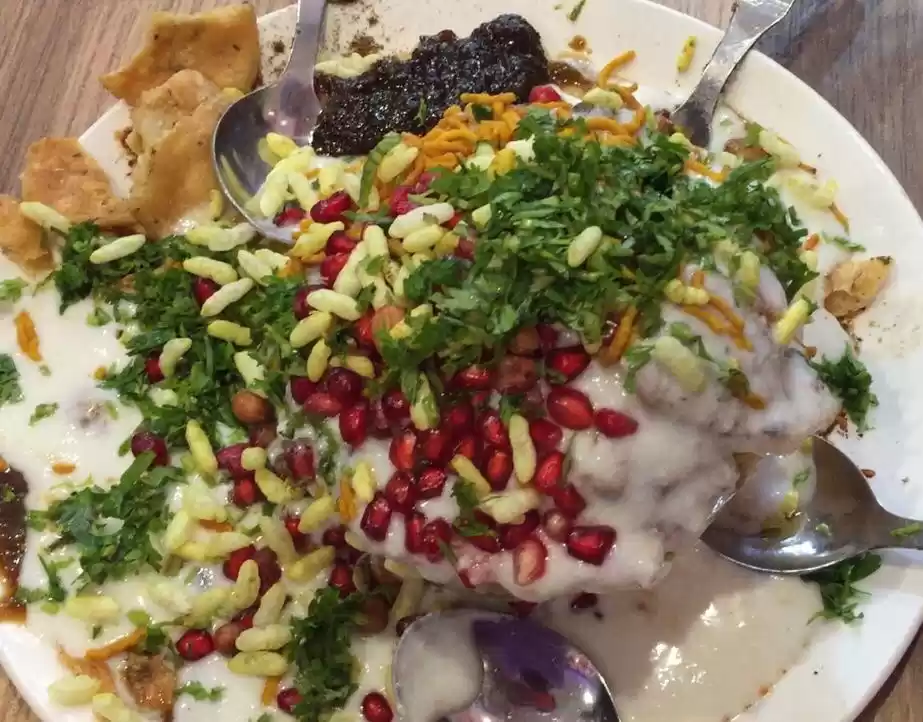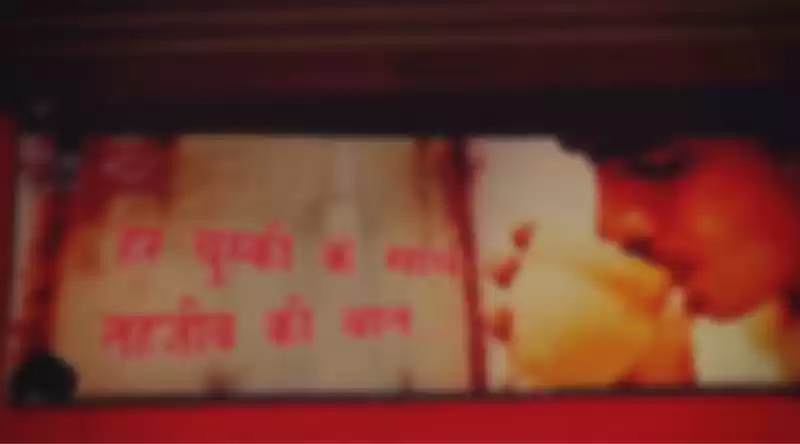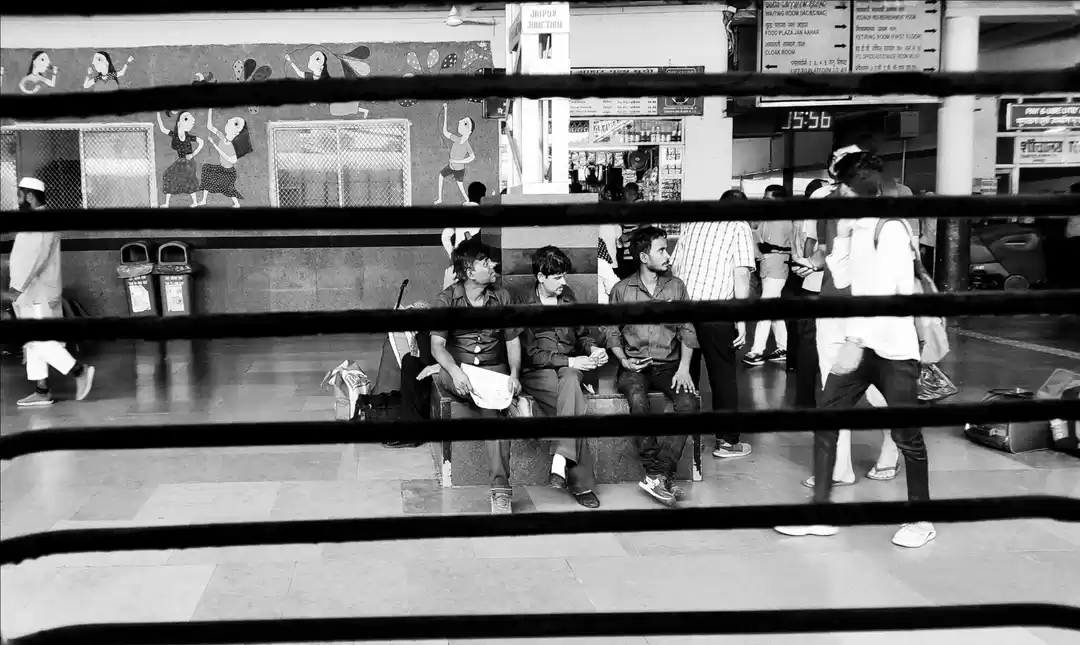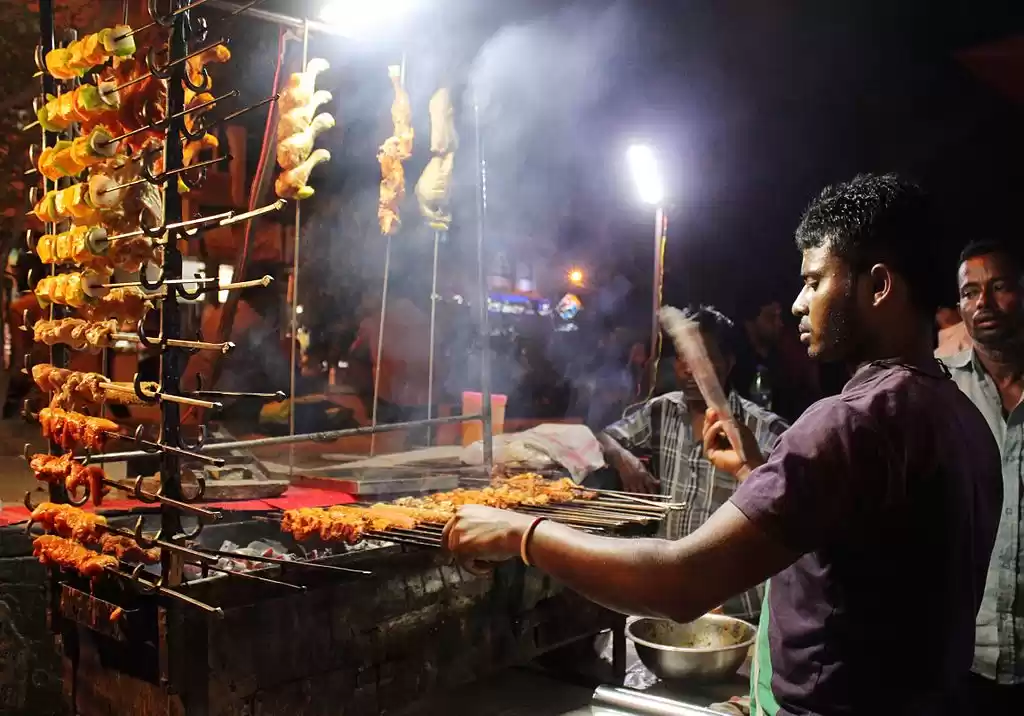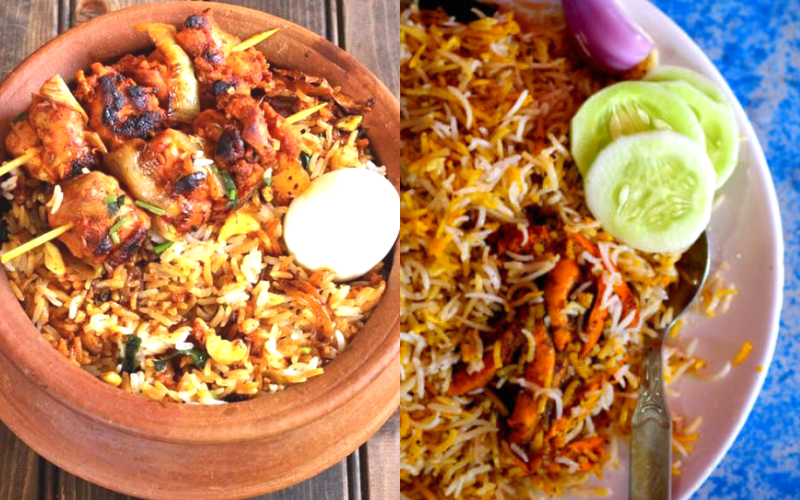When it comes to food, India is always a prime destination for food enthusiasts from all over the world. India's diversity comes in all forms, even food and culinary preparations throughout the land. Each state, region of the country has its own flavor and culinary magic. Right from the Kahwa, and rich and spicy, Chicken and Mutton preparations, of the North, through the Idlis, Dosas and Vadas of South, Rice and sweet delicacies of East, to the Vada Pavs, khakras, daal-bati-choorma of the West, India's treasure of its culinary preparations are a sight to behold. Personally for me, Northern India has always been my most favourate destination with regard to food. I don't what it is, the cheap price of food, or the irresistable, lingering, hot flavors which plays and dances in your mouth, even long after you are done savoring the food. Anyways, my heart is where North Indian Cuisine is.
Early last month, just before the coronavirus crisis intensified in India, and the lockdown came into force, I had been on a tour of North India, covering several historic cities in states of Uttar Pradesh, Madhya Pradesh, Rajasthan and the NCR region. My travel took me to several cities and introduced me to some of the most authentic dishes from the North.
The Food culture of North India starts its colorful and flavorful variance right from the first bite of the day. We've all grown up listening to our mothers chant, “breakfast is the most important meal of the day” and yet, most of us just gobble anything while walking out of the door or even worse, starve until lunch time. Well, North India has an array of breakfast delicacies which will make you stop in your tracks to prioritize your breakfast by its delicious aroma and flavours. Be it Paranthas or Chola Bhatura or a simple plate of Kachoris, North Indian Breakfast is a marvel in itself. Piping hot kachoris served with aloo ki sabzi, mouth-watering chole bhature, Khasta Kachoris are some of the most popular and go to breakfasts. Probably the best breakfast during my North India tour was the hot, piping khasta kachoris of Lucknow. Bajpayee Kachori Bhandar is a very popular outlet, and is always packed during the breakfast time. Infact people have to wait for hours as the incoming batches of hot khastas keep getting exhausted due to a huge inflow of customers. Rattilal's is another outlet, very close to Aminabad famous for its khastas, but I also recommend its soft yet succulent Chole Bhature and Aalu Kulchas. While in Gwalior, i was lucky enough to able to savor fresh, hot and juicy Jalebis along with Kachoris at the famous SS Kachoriwala. The Kachoris in this place gets over real quick owing to their popularity. Also, Jodhpur Mishthan Bhandar is yet another amazing spot for sweetmeat lovers. And how could we forget butter-laden Aalo ke parathes straight from the tawa, from the Dheli Paratha center at Sarafa, Gwalior. While in Jaipur, Rajasthan, I would highly recommend a visit to the Rawat Mishthan Bhandar, famous for its delicious and crispy Samosas and Raj Kachori. I had also tried some amazing Jalebis while exploring the Tonk Road. Tonk Road is filled with sweets shops and street food carts. For people with a attachment to tea, can also try the flavorsome tea from the Tapri Central






The first leg of my trip was in Lucknow, the city of Nawabs. As much as its historic and cultural heritage, the city also plays a major role in the bucket list of all food enthusiasts for the fact that Lucknow offers some of the most mouth watering, delicious cuisine, at a surprising cheap price. The cuisine in Lucknow is also known as Awadhi Cuisine, referring to the erstwhile princely state of Awadh(or Oudh). Awadhi cuisine is well known to food lovers, culinary bloggers and masters throughout the world, particularly for two dishes, The Lucknowi(or Awadhi) Biryani and the Tunday(or Galouti) Kebabs. The most happening and popular food street and area in the city, undoubtedly is Aminabad area of Lucknow. Aminabad hosts numerous food joints, but what it is famous for is a particular shop established way back in 1905, The Tunday Kababi, and as the name suggests, this joint is the most visited place for Tunday kababs, Naans and other Awadhi and North Indian Cuisine. Lucknowi Biryani is sold across the city, some joints like the Salim's Biryani and Ahmed Shah's Biryani are much popular. Although, the price of Biryani sold is almost similar throughout, that is around INR 100 to INR 150 for a full plate, which is enough to satisfy two persons cravings, while half plate comes around INR 60. Compared to other places in India, which sells authentic Biryanis for crazy prices which can range anywhere between INR 200 to INR 500, while not giving you the true flavors.



Biryani is an honor of all that is great about Indian food – the heady aromas, the vibrant colours, the fluffy rice and those addictive curry flavours. Biryani is a dish enjoyed throughout the length and breadth of India. Although there are countless variations of Biryani throughout the country, yet Lucknowi Biryani along with Hyderabadi Biryani remains the most popular forms. The authentic biryani recipes extract their richness from a lineage of ustads, masters who have been making it for centuries. Preserving the identity of the dish in the times when quickly cooked pulao is often audaciously served as biryani, the Lucknowi Biryani very well savour the aroma of the spices and the taste of the meat and vegetables. Unlike Hyderabadi Biryani known for its spicy succulent flavour, Lucknowi Biryani has a uniquely delicate flavor and rich fragrance. In preparing this unique dish, the meat and the rice are cooked separately and then layered in a pot that is placed over a low flame. Many chefs also add a little-concentrated stock to the rice to flavor it. Each grain will look like nothing much, but when you put it in your mouth, it will (if it's done right) burst with flavor.



North is also a land of fluffy and tasty Indian breads, just name it, right from the humble tawa roti to parathas to naans, kulchas and sheermals, you must know that our own country has several interesting bread types made in such amazingly creative manner that they act as wonderful accompaniments to any side dish they are served with. Can you imagine an Indian Thali without any kind of bread? The humble roti that we eat has even been mentioned in Tulsidas’ Raamcharitmanas (1600 AD) when it resembled the katori and was probably called rotika. Similarly, Naan is believed to have come to our land from central Asia and even the Paratha finds mention in the 12th century Sanskrit encyclopaedia, Manasollasa, compiled by Someshawar III, the then ruler of Karnataka. The breads in North India is highly influenced by a blend of cultures. Travelling to North India, you will be offered with some of the most delicious variations of Indian breads. Take the example of Naan, one of the most popular flatbreads, as its name suggests, Naan has its origin in Persian culture. This soft, spongy leavened bread came to India from Central Asia and became an inseparable part of Mughlai Cuisine. It is cooked in a tandoor and while kneading the dough, usually milk or curd is used instead of water, to make it soft. Its fluffiness comes from either baking powder, soda or baker's yeast. Naan is a popular flatbread which goes amazing with most Indian side dishes, curries and masalas. Two of the very popular variant of Naan is the Butter Naan and the Butter Garlic Naan. Some of the most savored Naan outlets can be found all throughout North and Central India. I would still recommend a particular outlet, Inderpuri, a very small veg restaurant in Gandhi gali, Fatehpuri in Old Delhi, just on one end of the famous Chandni Chowk. Also do try the Shahi Paneer and Mix Veg of this particular place. Another inseparable part of Awadhi cuisine, along with Biryani and Kababs, is the Sheermal, a leavened bread cooked in tandoor, just like a Naan, and flavoured with saffron and has a mildly sweet taste. Many variants have dried nuts and resins topped on it, levelled with Honey. Generally found all throughout the food streets of Lucknow, mostly in areas with Awadhi Cuisine influence, Sheermal goes perfect with spicy side dishes like Chicken Boti Masala.



The best way to explore and savor food is taking random walks on food street. North India is filled with specific streets designated for food lovers. A stroll through the Jama Masjid area of Delhi offers you with sights of shops selling Naan, Biryani, Chicken Tandoori, etc. Similarly Chandni Chowk is famous for historic spots like the Parathe wale Galli or the Karim's. While taking a stroll in the streets of Jaipur, Rajasthan, I came across several delicacies that I had tried for the first time. One of them was a traditional and popular Rajasthani Dish, Daal-Baati-Choorma. It is served with baked flours shaped like balls, The Baati, and flavoured lentil soup, The daal while the crumbs of Baati are shredded, roasted in ghee and desiccated coconut, dried nuts and cardamom powder, and are added to perk up the flavors. The end result is a tasty and delectable Rajasthani sweet, the Choorma. This particular dish is a very filling and savory choice for Lunch. Another very interesting and mouth watering, yet extremely spicy dish, a new dish I had tasted in the streets of Jaipur, just Hawa Mahal, was the Bakhra Chustha Masala. Made from marinated entrails of lamb, stir fried in hot yet beautiful choice of Indian Masalas, garnished with Dhaniya and Chopped Onions. It is best complimented with Tawa Chapatti. It is a very heavily spiced delicacy, and readily melts in your mouth while giving you the feels of the spice blend as you devour the dish.



In India, “chaat” is a word that describes more than just a set of snacks: It’s a way of life, and a category of food that hits practically every element that makes something craveable—sweet, sour, tangy, spicy, and crunchy. Chaat can be enjoyed anytime. It’s light enough to be eaten for breakfast or as an afternoon snack, but satisfying enough to take the place of lunch or dinner. Pani Puris, Dahi Chaat, Sev Puri, Basket Chaat, Dahi Vada, Aaloo Tikki, Bhel Puri, you name it. If there is anything Indians are crazy about equally regardless of age, gender, demographics, it is chaat. A chatora is someone who can just not live without chaat and street food. Are you one of them, because I definitely am. Throughout my journey, if there is anything consistent, which kept me on my feet and saved me from hunger pangs, was chaats. The Papdi Chaat in front of Rumi Darwaza in Lucknow was heavenly, an so was the Aaloo Tikki Chaat near Amer Fort in Jaipur. Royal Cafe in Lucknow probably serves the best Basket Chaat I have ever eaten till this day. As the name suggests, the chaat literally resembles a basket which is overloaded with a whole bunch of ingredients, which no doubt make it an indulgent affair, and an immensely satisfying one too. The tokri or the basket is delightfully crispy, and it is made by deep-frying grated potatoes using a mould. The crispy tokris or baskets are then used to plate the chaat.





After our exploration and savoring of the spicy, savory and succulent snacks, main course, chaats are over, we definitely need something to cool our flared tastebuds to calmness. This is where Desserts, Sweets and Cool Drinks, sharbats steps in. Dessert makes us go weak in the knees. It's a warm blanket on a cold winter evening and without a doubt Indian desserts tops our list when we crave a sweet treat. There is no denying the fact, that desserts give a befitting end to any meal. And we Indians? We have a penchant for sweets, no doubt. Desserts, just like other foods, has a wide vibrant variance across India. Just after I was done with my plate of Biryani in Lucknow, I strolled out through the streets in search of something sweet, something to calm me down. I walked up to this vendor selling a varities of sweet and asked him for a baati of creamy kheer. Made with Milk, Ghee and saffron, each morsel of the kheer melted in my mouth. I have never had such a creamy kheer earlier. Morever the earthenware baati in which the kheer was served, added an extra earthy flavour to the kheer, absolutely heavenly taste. The vendor had a vast array of sweets ranging from Gulab Jamuns, Shahi Tukdas, Rasmalai. Jaipur City was another surprising place for sweetmeat delicacies. Especially found on the Tonk Road, there are a wide range of desserts and sweets to select from. I choose to enjoy a plate of Rasmalai from one of these shops. It was a perfect blend of milk, chana(curdled paneer) with saffron. The Rasmalai was attractively kesariya(of Saffron Color). Throughout North India, if there is one drink made famously and cannot be made with such perfection anywhere else in India, is the Lassi. The North Indians, especially people of Punjabi descent, makes the most delicious, creamy and thick Lassi from fresh curd. With a perfect dolop of Malai, traditionally Lassi is served in disposable earthenware glasses.


















